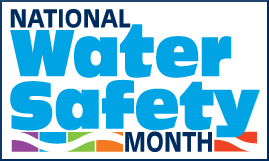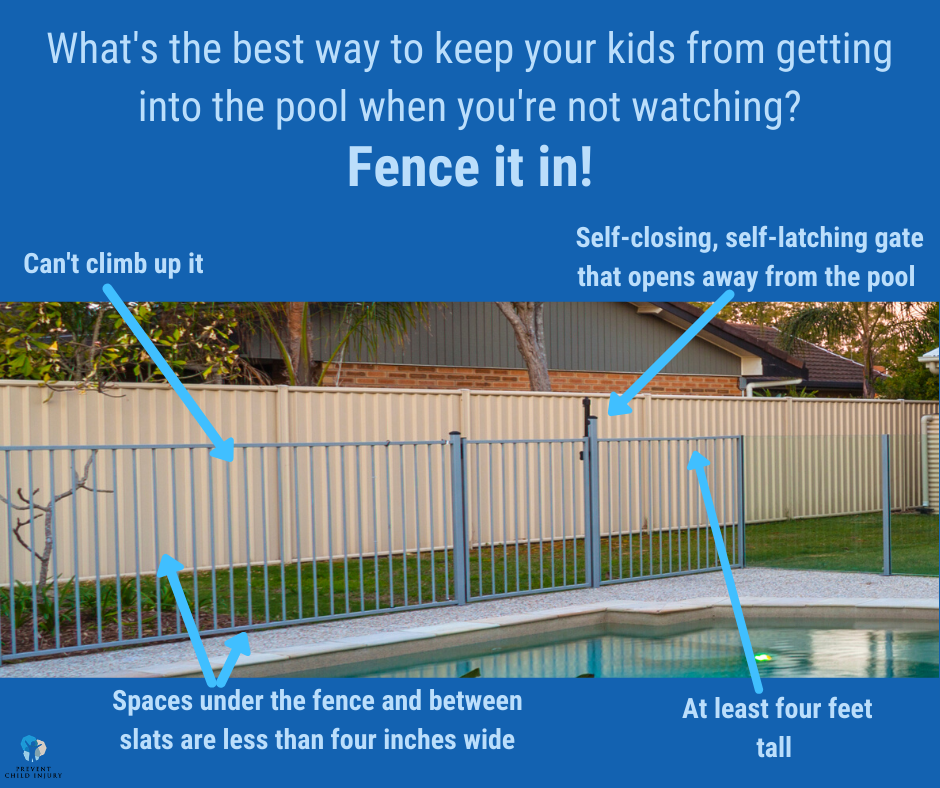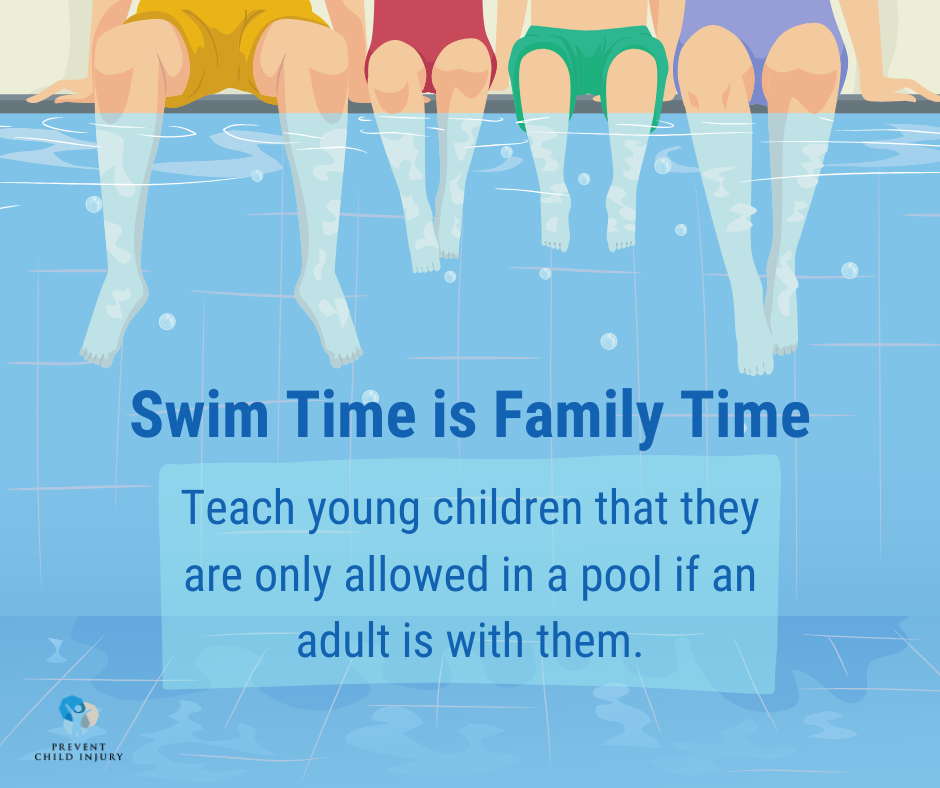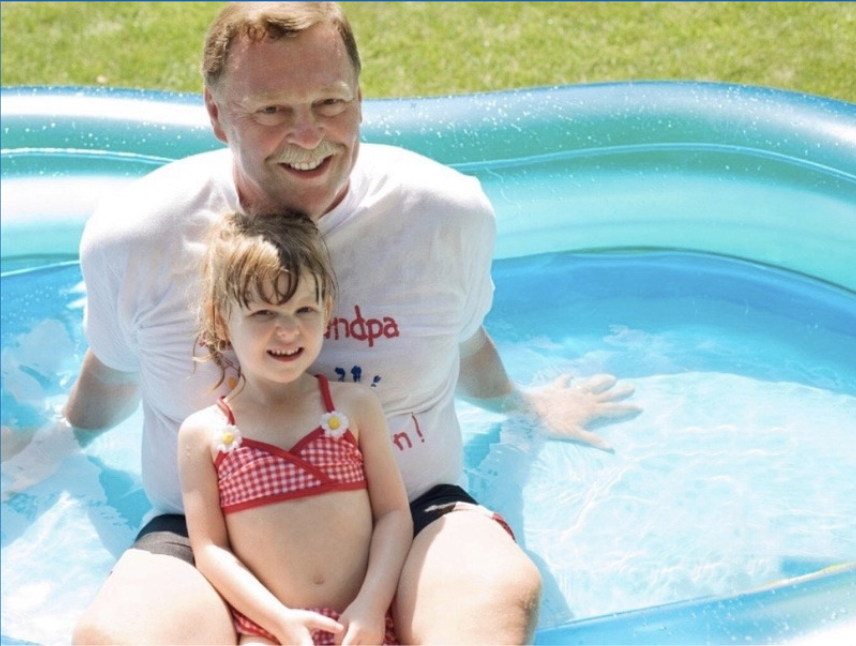May 11th, 2020: Swimming Pool Safety & National Water Safety Month
/May is National Water Safety Month! Drowning is the leading cause of death for children 1 - 4 years old, and the second leading cause of injury death for children 5 - 9 years old. While rates of drowning fatalities have been decreasing since 1985, drowning still claimed the lives of nearly 1,000 children in 2017.
It’s important to discuss water safety every year when the weather starts warming up and families begin going to beaches, lakes, and pools. Check out the American Academy of Pediatrics’ comprehensive Drowning Prevention Toolkit for infographics, videos, and social media posts on water safety for children of all ages.
Toolkit Outreach Week
In recognition of National Water Safety Month, we are hosting an outreach week May 11th - 17th using our new toolkit on swimming pool safety. Nearly 60% of children under 6 years old that drown in swimming pools were not supposed to be in or near the pool when found. Because of this, we focused on a few of the “layers of protection” that are necessary in preventing children from accessing the swimming pool without an adult present. Our toolkit focuses on these key messages:
Use Physical Barriers: Make sure all swimming pools (including inflatable above-ground pools) are surrounded by a fence that is at least 4-feet high and has a self-closing, self-latching gate. The fence should not have openings (either underneath or between the slats) that are more than 4 inches. Empty smaller pools after every use.
Safety Barrier Guidelines for Residential Pools — Consumer Product Safety Commission
Install Alarms: Install alarms on all doors that lead outside. These alarms make a sound when the door is opened to warn adults that a child might have gone outside. Put pool alarms in the water itself. These alarms sound an alert when there are waves in the water, which could mean that someone has fallen into the pool.
Pool Safely Step 4: Alarms (Video) — Pool Safely
Why You Need to Invest in a Pool Alarm This Summer — Good Housekeeping
Swim Time is Family Time: Teach young children that being in or around the pool is only done with adults around – never by themselves. Put away all pool toys when swim time is over so that children are not tempted to go near the pool unsupervised.
Swimming Safety Tips — Safe Kids Worldwide
Please add swimming pool safety to your outreach plans for this week, and use our materials — including graphics, social media posts, newsletter, and press release — to raise awareness about swimming pool safety and drowning prevention.
COVID-19 Quick Tip
With some public pools delaying opening or closing for the summer, we have heard reports of families buying portable and above-ground pools for their backyards. These can be just as dangerous as permanent pools, so it’s important to keep these safety tips in mind when purchasing a portable pool:
Action of the Week
Every Monday, we are promoting a new action that each family can take to keep their children safer while social distancing. This week, we want every family to clean up and put away pool toys when everyone is finished swimming. Children could be tempted to play near the pool without an adult present if toys are left out. Children could also try to reach in to grab toys that are floating in the pool, risking falling into the water.
Coming Up
On Our Calendar May 18-24: UV Awareness Month, Don’t Fry Day (May 22nd) May 25-31: Home Poisons
Events
Attend Columbia University’s ICRC Annual Injury and Violence Prevention Conference next Thursday, May 21st, from 10AM - 4PM EST. “The conference will provide the opportunity to converse with your injury prevention colleagues in academia, health departments, hospitals and other organizations to discuss cutting-edge research and best practices in injury and violence prevention.” Register (for free!) for the conference here.
The Children’s Safety Network (CSN) is hosting a webinar titled “Highlights from the Child Safety Learning Collaborative” on Thursday, May 21st from 3 - 4PM EST. The webinar “will highlight how states work together through the CSLC to achieve health results by building capacity to improve state injury and violence prevention systems.” Register for the webinar (for free!) here.







